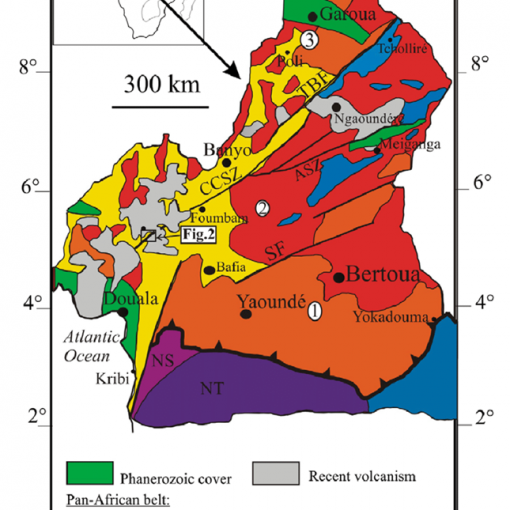As we have read over previous articles, there are many aspects of the Energy Transition that are able to be readily adopted by Extractive Industry companies. To recap, these are some of the recommended steps of the Energy Transition:
- Improve energy usage efficiencies;
- Reduce waste and GHG emissions;
- Implement Carbon Capture measures;
- Increase the use of Renewables in the energy mix.
Making positive steps in support of the Energy Transition will also make improvements in a company’s ESG rating. ESG is Environmental, Social, and Governance criteria applied to a company’s operations and value chain. ESG ratings are increasingly important in maintaining access to Funding and Finance as well as effectively satisfying the requirements of Regulators and Stakholders. ESG criteria examples include (but are not limited to):
- Environmental – Management and mitigation of direct and indirect waste and emissions based on three categories (Scope 1 – direct from company owned or operated equipment; Scope 2 – from purchased energy used in company operations; and Scope 3 – other indirect sources related to the company’s value chain (inward and outward));
- Social – Evaluating and demonstrating a company’s business relationships with employees, suppliers, and the local community. Is an asset being developed and/or operated in a manner to enhance the working conditions for these stakeholders? This may include supporting Social Benefits measures to help mitigate “energy poverty” of surrounding communities to help improve living standards with better access to electricity, clean water, and improved sanitation;
- Governance – Demonstrating that a company uses accurate and transparent accounting methods and that financial stakeholders are given an opportunity to participate in important issues. They may also want assurances that companies avoid conflicts of interest in their choice of management, don’t use political contributions to obtain unduly favourable treatment and don’t engage in illegal practices.
For this article we are going to examine a hypothetical Extractive Industry company in Southern Africa to see what is reasonably possible to support the Energy Transition. This company could be involved in Mining or Upstream Oil & Gas in South Africa, Botswana, or Namibia for purposes of this example. An example location in the Northern Cape of South Africa has been selected for use in the calculations. There is a wealth of Natural Resources able to be accessed by these Extractive Industry companies in these countries but there is also significant amounts of Energy Poverty among the local communities which needs to be addressed.[1]

Fortunately there is also a significant amount of Renewables energy resources in these countries with good Solar radiation (high values of Photoelectric Electricity Potential) and Wind energy (significant mean wind speeds). The challenge is to develop the Natural Resources with these Renewables in the most efficient way possible, addressing the good challenges of the Energy Transition and achieving meaningful ESG results with the company’s operations.
Extractive Energy Facility Assumptions
For this example, we can make certain assumptions to demonstrate potential solutions to satisfy the Energy Transition and ESG criteria challenges. A typical facility community may look similar to the photograph below.
- Facility Power Requirements = 10 MWp, average 8 MW, annual 70,080,000 kWh;
- Assume national grid connected electricity provides this power (just for this example, not necessarily needed if this is an isolated location without grid connection – see calculations below);
- General regional area contains a number of remote communities possibly unconnected to the grid so either without reliable electricity or dependent on Diesel Conventional Power Generation;
- Semi-arid geographical location with reduced amount of vegetation and some amounts of deforestation due to use in unsustainable charcoal harvesting for cooking and heating purposes.

The facility itself would have a certain amount of equipment used in logistics, construction, and operations.
Some Renewables technical assumptions about a hypothetical (assumed) location in South Africa’s Northern Cape region where Extractive Industry work is in progress and being investigated further:

This data will be used in some calculations later in this article.
Recommended Actions
In response to the challenges of the Energy Transition, certain actions can be taken:
- Improve energy usage efficiencies:
- Monitor facility equipment and vehicles to ensure they are adjusted to run efficiently with elimination of unnecessary emission releases and better fuel efficiencies;
- Utilise digital transformation technologies and tools to ensure processes are running efficiently with minimal reprocessing or abortive work;
- Reduce waste and GHG emissions:
- Water management with groundwater management and monitoring;
- Waste management with elimination of certain wastes by recycling and containment of waste streams for treatment and clean-up prior to any external release;
- GHG emissions reduction by adopting cleaner fuels (i.e. CNG, LNG, Hydrogen, Ammonia, or Electricity) for the operational equipment and vehicles;
- Implement Carbon Capture measures:
- If some equipment or processes discharge significant GHG emissions, consider technologies to capture these emissions and safely store or use them (e.g. locally produce ammonia with Renewables electricity and captured CO2 emissions);
- Alternately (and possibly more likely) implement Carbon offset measures with Reforestation projects in the surrounding communities described further below;
- Increase the use of Renewables in the energy mix:
- If the company is using grid electricity, they could implement Renewables electricity production projects to support regional communities – this provides green electricity to offset their grid electricity which may have a significant carbon footprint (e.g. produced from coal fired national power plants) – but it also helps Social Benefits described below;
- If desired, usage of more company owned Renewables electricity would be possible with a Hybrid Microgrid, especially in the day time, with night time (or during wind lulls) electricity supplied by the national grid.

In order to improve ESG considerations, related actions can be taken within both the facility as well as with regional communities:
- Environmental
- Energy efficiencies, emissions, and waste were covered above;
- Company extractive operations may require significant water and Company will need to ensure any groundwater or surface water resources are utilised without adversely affecting surrounding local communities – after using this water, Company needs to ensure that wastewater streams are contained and cleaned (+ could use Solar power) prior to any external release off the property;

- A very attractive supportive measure able to be taken is to help provide green electricity for remote regional communities who may be using Diesel power or expensively subsidised (and maybe unreliable and carbon intensive) long distance grid electricity and replacing this with electricity from Solar PV and/or Wind Power Microgrids – either way, Carbon credits could be available to the Extractive Industry company to offset the carbon footprint of their own Scope 2 electricity emissions;
- Carbon capture by Reforestation projects can provide two benefits – one is Environmental Carbon credits and the other is Social and described below;
- Social – Clean water is a serious social issue for some of these populations – Company operations may require a lot of water and improved water access could be provided with distributed boreholes with Solar powered pumps connected via distribution pipelines able to provide improved clean water access both to these communities and to the Company;

- Reforestation projects could provide significant sources of local employment from preparing the land, planting the trees, ensuring adequate irrigation where necessary, and maintaining the forest preserves as the trees grow – it may be possible to have multiple distributed Renewables power farms complete with surrounded and intermixed reforested areas with sustainable native species. A Carbon removal (sequestration) project in a similar semi-arid environment utilised 10,000 hectares, reforested to capture 1.257 million tonnes of carbon at a Carbon credit price of ~$20 USD/tonne – scaled versions of this solution are widespread internationally at Carbon credit prices up to $30-35 USD/tonne; Carbon credits could be legally protected by 100 year Carbon Right and Carbon Covenants registered on the land titles[5];

- Governance
- Good governance is a normal part of most company operations. In order to support the Energy Transition and ESG targets, extensive work and cooperation will be needed with local, regional, and national governments;
- Setting up routine regular working meetings with local communities and Stakeholders to hear about any issues and progress on joint iniatives will help demonstrate good governance:
“Mining has an impact on communities. That impact can be positive – catalysing social and economic development, transforming people’s lives for the better– but risks being negative should a company act insensitively. Responsible mining companies recognise that they need to proactively engage with communities to build strong relationships based on trust and respect. They seek to minimise negative impacts and maximise benefits, building long-term mutually beneficial relationships.”[6]
- Members of local communities may be employed by the Extractive Industry company and internal good governance activities will include informing them and getting input on company operations, safety, and environmental performance.
Project Reference: Lundin Energy has been pursuing many of these Energy Transition strategies. For their offshore Norwegian North Sea Projects Johan Sverdrup and Edvard Grieg, Lundin implemented grid “Power from Shore” as well as offsetting it with Norwegian hydropower and Finland onshore wind farm “green” electricity into the regional grids. Additionally, they participated in a Reforestation Project in Spain to provide “Natural Capture of Carbon”.


These cost estimates above are for illustrative purposes only and more detailed cost estimates using RETScreen and/or HOMER Pro are possible and recommended.
Conclusion
From all this information, it can be seen that good Energy Transition and ESG actions are reasonably possible to be done by Extractive Industry companies in these regions. Similar actions are already being taken in northern Australia (Western Australia and Northern Territory) by Extractive Industry companies there. In order for the Energy Transition to be effective and sustainable, these actions have to be economically viable. From the costs demonstrated, these are economic solutions that also help the Climate challenges currently being faced and would help companies and regions in their pursuit of Net Zero goals. Improved ESG performance will help better access Funding and Finance resources.
[1] https://www.linkedin.com/posts/rochelle-bowen-steyn-pr-sci-nat_southern-african-communities-and-the-energy-activity-6728996862549880832-il-T
[2] https://solargis.com/maps-and-gis-data/download/south-africa
[3] https://globalwindatlas.info/area/South%20Africa/Northern%20Cape
[4] https://sadc-gip.org/maps/202/view
[5] https://www.goldstandard.org/projects/yarra-yarra-biodiversity-project
[6] https://www.icmm.com/en-gb/society-and-the-economy/mining-and-communities




